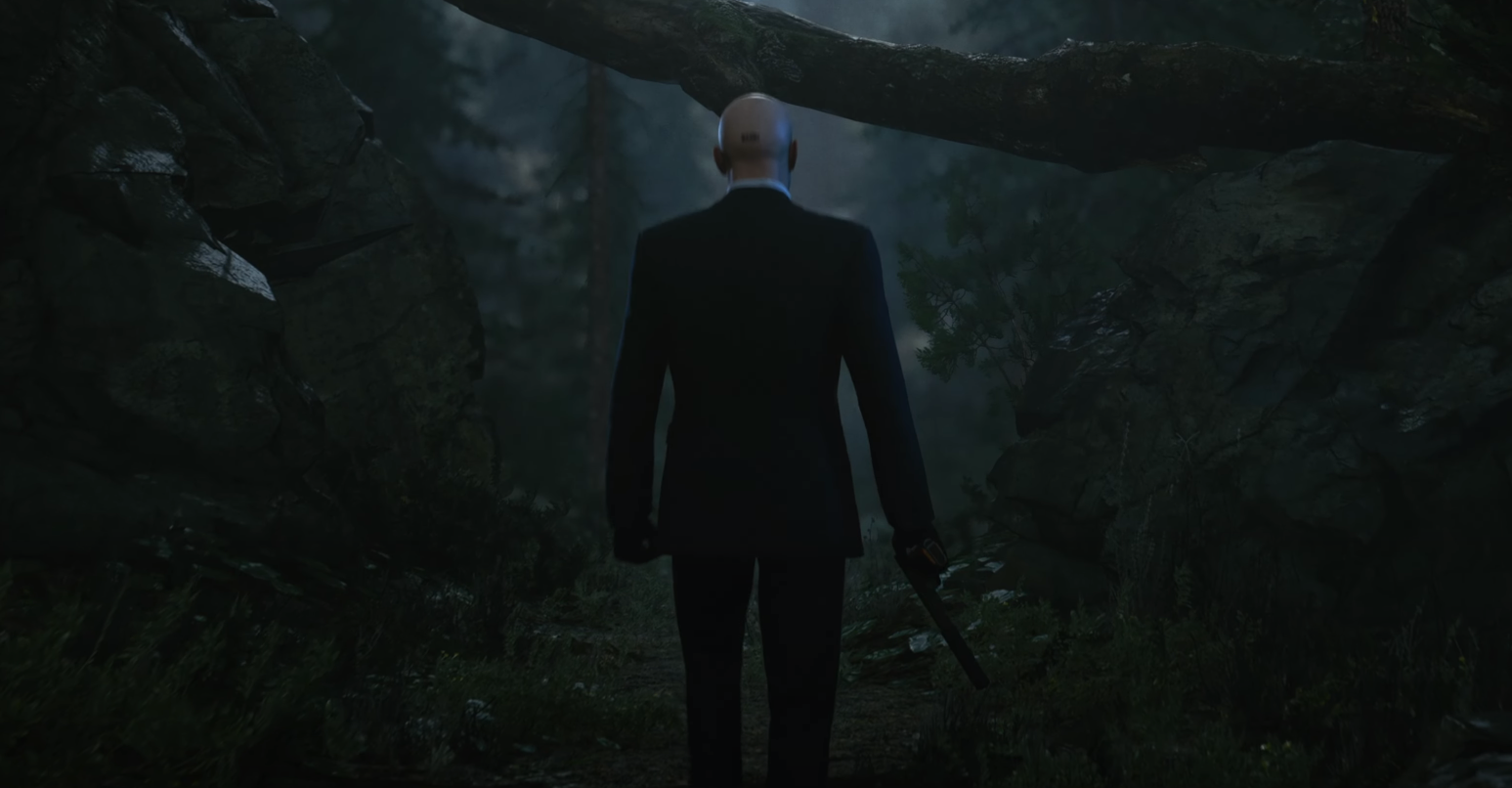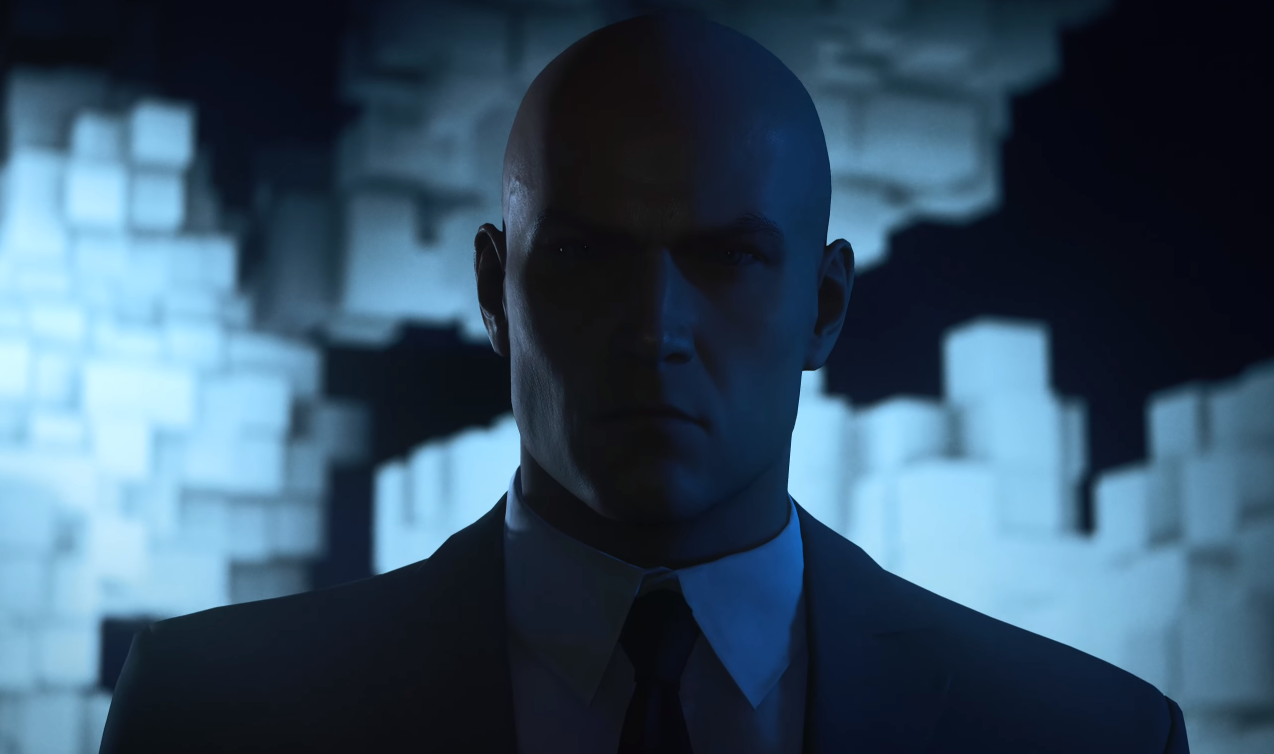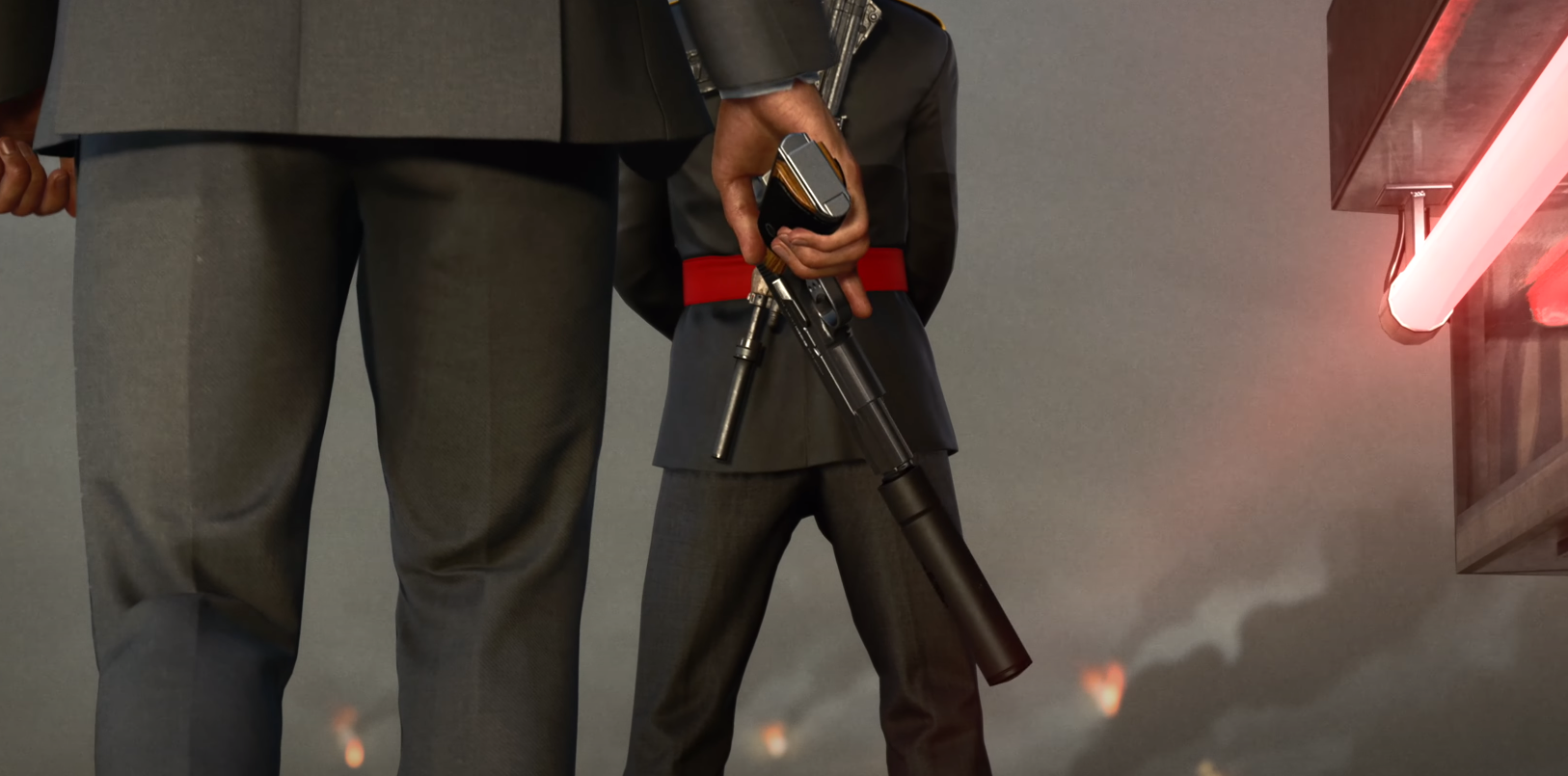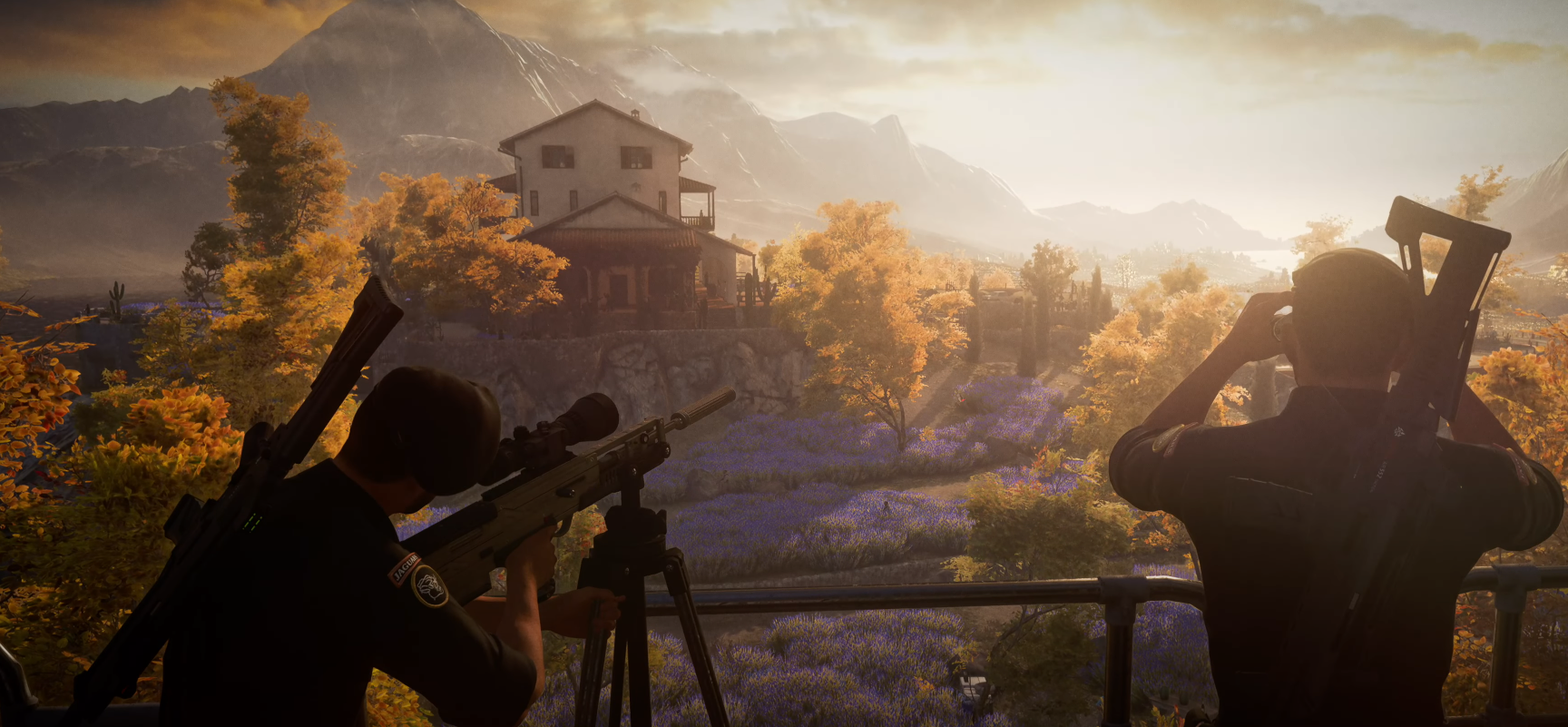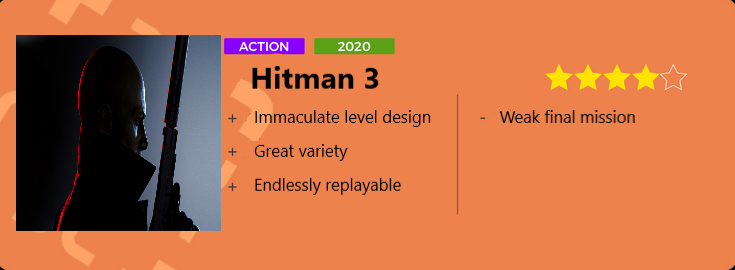Agent 47 has been honing his craft for 21 years now. He’s a flawless killing machine, capable of infiltrating anywhere in the world to pick off high-profile targets unseen. If he does his job properly, a murder will look like a series of unfortunate events. Oh no, the crime boss slipped from a balcony. What a shame.
Of course, it was all planned.
Controlling this bald butcher, you become a master of his deadly deeds, too. You play Hitman 3’s six levels repeatedly until something clicks in your mind, like a missing puzzle piece slotting into place. You know that stealing another assassin’s clothes in Dubai will grant you an audience with your target and let you slip poison into their drink. You know that tampering with that machinery in an Argentinian vineyard will let you squash another target flat. You understand how to pull off the perfect assassination, but there’s never only one way to do it. That – along with its globe-trotting, virtual tourism aspect – is what makes the Hitman series so special.
This is the final game in the new Hitman series, and I only just realised you can shoot plug sockets. I mean, you can shoot anything, but I only just realised they react to your bullets. There are extension cables all over the world of Hitman – usually conveniently placed near a water source, health and safety be damned. Approach them and a tooltip will say “screwdriver missing”. This particular time, I didn’t want to mess about looking for one – I thought “screw it” (sorry) and pulled out my most reliable tool: my silenced pistol. Pwip! A spark! It actually worked… So I shot the plastic drinking fountain next to it – which also says it requires a screwdriver – and pwip! Water pissed out and pooled around the socket. My target went to investigate the noise of a bullet striking plastic, stood in the water, shuddered, and dropped dead. I walked away as if nothing happened, my disguise intact, a workman’s glove hanging from my back pocket. I’d have whistled if I could.
It’s a testament to the developers at IO Interactive that I’m still finding new ways to kill people in a game where you can wield a muffin as a weapon. Every object in the world has rules, and those rules often lead to surprising interactions. Sure, you can follow the game’s Opportunities, which are unique, story-based kills (usually three per level in this one), but the sandbox really opens up when you free yourself from them. Hitman 3’s Escalation contracts (which were also available in the previous games) are built around this, asking you to replay levels with different targets to kill and specific ways to do each one. Oh, and you can’t save the game. Escalations force you to react and adapt – it’s Hitman in its purest form and playing this mode takes your understanding of the game to the next level.
IO Interactive clearly felt like the Opportunities, as fun as they are, were a bit of a crutch, too. That’s why the developer reduced their number for this one. Having fewer things to tick off in the menus probably has the happy side effect of easing new players in as well. But while Hitman 3 is more approachable in some ways – with more linear openings easing you into its levels – there are also some areas where it’s more complex than it’s ever been. The third mission, which takes place in and around an underground rave in Berlin, is perhaps the most complex contract Agent 47 has ever taken on.
The first time you play Berlin, it starts with a cold opening. There’s no pre-mission cutscene or briefing – Agent 47 is alone, and he’s forced to make his own objectives. You pass a roadside petrol station and head into the woods, following the faint sound of music. You see your first target here – an ICA agent, your former colleague – and you take him out and drag his body into the bushes. Then you see it – a huge warehouse in the middle of a sprawling industrial zone. There’s a queue outside, an underground rave is pounding from somewhere below, and there are ten targets to find. Until your second playthrough, they’re not even marked on the map. You pop in the ICA agent’s earpiece and hunt them down. There are no Opportunities, just you and this macabre eeny, meeny, miny, moe selection of goons to murder. You stalk the crowds and search for clues in the rave itself, backstage, in the hallways above, the biker club next door, and in the other various locations in this massive, intricate, initially intimidating level. It’s peak Hitman, up there with the first game’s Sapienza.
One of the things I love about Berlin is that the agents can see through every disguise – they know your face and your tactics. You have to blend with the crowd, slipping through dancefloors and mingling in beer gardens while stalking your targets. In my first playthrough, I break into the nearby biker club and find an agent there, up on the second floor. He’s searching for me with a sniper rifle from a vantage point. I relieve him of his life and the weapon, before using it to snipe another agent who’s having a smoke by the lake. His body falls into the water, concealed from the partygoers. As I escape the biker club, I see another target down below and kick a bag of bricks onto his head. With each kill, the handler in charge of the ICA agents becomes more panicked, eventually pulling them out when I send a big enough message. It’s endlessly replayable and full of these deadly loops. You feel clever for figuring it all out. Like Escalation contracts, you have to make your own opportunities here, and it’s much stronger for it.
The fourth mission, set in Chongqing, China, takes you to rain-slick, neon city streets, and back alleys. It’s noir-like and moody – a more traditional Hitman mission with two targets and a handful of Opportunities to follow, if you choose to. Your targets here are two tech giants who both use people as pawns in their own way, and you can turn their creations against them to murder them with the best weapon in your arsenal: irony. This level is like two maps stacked on top of each other. You discover the story as you explore the streets, hotels, and noodle joints of Chongqing, and then you have two locations to infiltrate – a heavily guarded building and an entire underground facility that could easily be a level of its own.
Elsewhere, there’s a murder mystery in a countryside manor in Dartmoor, England, which is like playable Knives Out. There’s also a mission set within the tallest building in Dubai, and a tango in an Argentinian Vineyard – which is like a throwback to A Vintage Year, a classic mission from Hitman: Blood Money.
Hitman games have always been about variety, and Hitman 3 is probably the most diverse game in the series so far. Not just because the locations you visit are so distinct, but because each mission has its own twist. Berlin and Dartmoor are clear examples of what I mean – levels with a gimmick – and there’s another twist in Argentina, where, for the first time in the series, you have an ally within the mission who won’t dob you in when you launch a garden fork at someone’s head.
The only thing that lets the game down is its final mission, which falls apart because of that variety. I can see what the developers were going for here. It’s a mission built around catharsis, where every NPC in the level is viable and can be killed without consequence (the entire series until now has encouraged passive play outside of your designated target). I just wish it took place anywhere else but on a train. Yes, it’s Hitman on rails. No, I don’t know why anyone thought this was a good idea. Hitman’s shooting has never been its strong point. Luckily, the rest of the game saves it.
One of the things I love about Hitman 3, outside of that last mission, is how it opens levels up. There are many more sightlines and sniping opportunities than there were in Hitman and Hitman 2. There’s something classically Hitman about casually walking up to a perch, briefcase in hand, before assembling a rifle and scoping in on a kill.
I also love all the little details – stuff you see actual action games gloss over that Hitman nails, despite the fact barely anyone will see it. Shoot a car and the alarm might go off, shoot the tyre and it will hiss and sputter, the weight dropping on one side of the vehicle. Playing the game properly, you should never be in a firefight, but the world is reactive and dynamic anyway, just in case.
I adore how people comment on the clothes you’re wearing as you pass. I love how Agent 47 holds a knife, the blade hidden behind his forearm as he approaches a target, or how he holds a pistol out to the side, ready to fire – unless you’re close to someone, in which case he tucks it behind his back. This kind of stuff has always been in Hitman, but Hitman 3 is a studio at the top of its game. IO Interactive is basically flexing at this point.
In an alternate universe, Hitman became one of the best selling series of all time, its influence akin to something like PUBG. In this better world, where the pandemic never even happened, Hitman spawned a genre of its own – the Hitmanlike, where developers put level design and systemic play right at the top of their priority list. Alas, we can’t break through the skin of the world and reach that universe. We’re stuck here. In our world, Hitman stands alone. There’s nothing like it, and Hitman 3 is an outstanding refinement of that unique 21-year-old recipe. Just watch out for that secret ingredient. (It’s poison).
Version tested: PC.
Next: IO Interactive Posts Multiple Job Openings For Project 007 James Bond Game
- Game Reviews
- PC
- Xbox One
- Ps5
- ps4
- Product Reviews
- Xbox Series X
- Hitman 3
Kirk is the Editor-in-Chief at The Gamer. He likes Arkane games a little too much.
Source: Read Full Article
